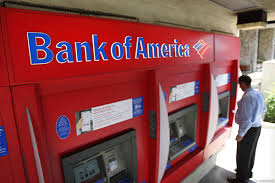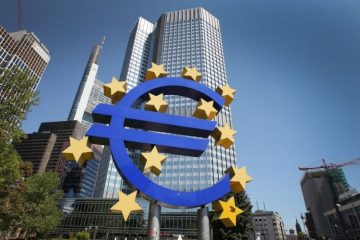Bank of America’s CEO Finally Delivers

In the depths of the financial crisis in 2011, Brian Moynihan—who’d been the unexpected pick for CEO a year before—predicted that Bank of America would soon be earning well over $ 20 billion a year.
B of A still hasn’t gotten there. Naturally, his forecasts were derailed by a combination of a deluge in mortgage costs from the disastrous acquisition of Countrywide Financial, and years of extremely low rates that shrank the margins the bank earns on its giant loan portfolios. Still, Moynihan is doggedly edging closer to his goal. And the second quarter earnings announcement on July 18 convincingly demonstrates that B of A is making the transition from recovery to potentially rich profitability.
Here are the key takeaways:
Net income is good, but not quite as good as it looks. B of A recorded $ 5.3 billion in after-tax profit, or $ 21.2 billion annualized. But the figure included gains on the sale of its British credit card business and several other gains on investments. Take out those non-recurring items, and B of A’s recurring net income looks more like $ 20 billion.
Results improved substantially despite a drop in trading revenue. What’s encouraging is B of A’s slow but relentless progress quarter by quarter. Net income rose 10% versus Q2 of 2016. And that gain came despite a 24% decline in net income at its global markets franchise, driven by a steep fall in revenue from bond trading. But as Moynihan pointed out on the conference call, bond transactions boomed in the Q2 of 2016 because of the upheaval from the Brexit vote. By its very nature, bond trading is highly erratic, and B of A depends on trading far less than such rivals as JP Morgan Chase and Goldman Sachs. That overall results remained strong despite the sharp drop in trading revenue is highly encouraging.
B of A is finally benefiting from rising interest rates. Its net interest income, the “spread” between what it charges on loans and pays for the deposits that fund those borrowings, jumped from by $ 900 million or 9% to $ 11.2 billion, compared with Q2 of last year. The Fed’s four rate increases since December enabled B of A to raise rates on its loans, and a continuation of a rising rate environment should keep pushing NII higher.
Moynihan is using operating leverage to drive profits. The CEO constantly talks about the power of “operating leverage,” one of the levers he calls B of A’s “mantras.” Operating leverage consists of the profit growth arising from growing revenues faster than expenses. That’s precisely what’s happening at B of A. For the first half of 2017, revenues grew 6.8% to $ 22 billion, but expenses barely budged, rising just 1%. Result: Profits jumped 22% to $ 10.1 billion. Moynihan is promising more of the same, pledging to shrink costs as revenues continue to wax modestly.
The star is consumer banking. That’s the business that Warren Buffett, B of A’s biggest shareholder, adores. The reason: B of A is flush with extremely cheap deposits from around 30 million customers. Of its almost $ 1.3 billion in deposits, around half reside in the consumer bank, chiefly in checking accounts that cost just .04%. Put simply, cheap deposits explain why a retail bank, if its’ run with excessive risk, is a highly lucrative business. Due to cheap deposits, flat expenses, and rising rates, the consumer bank posted record quarterly profits of $ 3 billion.
B of A shares look like a buy. Moynihan’s strategy of “responsible growth” eschews the kind of trading and credit risks that sank bank profits in the past. His goal is to grow by selling more products to existing base of credit-worthy customers. That model, he says, should allow B of A to grow revenues more or less in line with GDP, while returning 100% of earning to shareholders in dividends and buybacks. In other words, he claims that B of A can keep growing—and keep in mind that operating leverage should keep profits growing far faster than revenues—without without any boost from retained earnings.
Moynihan has pledged to return $ 17 billion to investors in the next 12 months, split 70-30% between buybacks and dividends. Its market cap stands at $ 235 billion. So returning $ 17 billion would give B of A a “yield” in combined dividends and buybacks of 7%. Add earnings growth of 4% (that’s 2% real GDP plus inflation), and investors should expect a total return of 11%. But if Moynihan hits his mark and returns all of B of A’s profits to shareholders, with earnings now in the $ 20 billion range, the yield would rise to 8.5%, and the total return to more like 12.5%.
This writer was one of the few observers who predicted that Moynihan would succeed. He’s not quite there yet. But he’s close. And if he does get there, he’ll prove that old-fashioned, low-risk consumer banking is one of the world’s best businesses.

